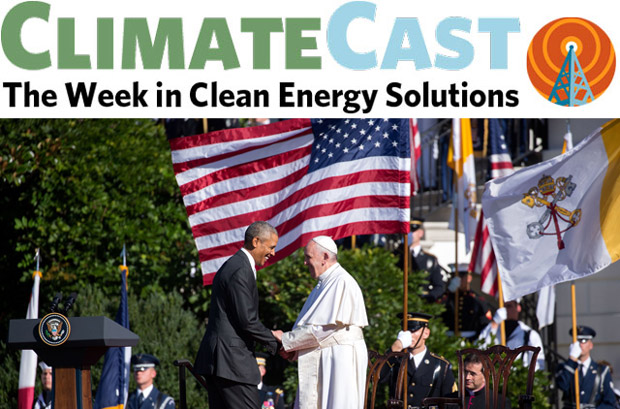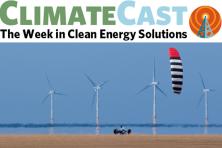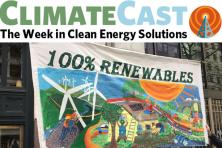China announces cap and trade
China showed last week how it hopes to peak climate pollution by 2030, when President Xi announced plans for a cap-and-trade system. Xi also promised $3.1 billion in climate aid to developing countries and to give renewable energy priority over fossil power on its electric grid, ending a logjam that bottled up 15 percent of its available wind power during the first half of 2015. Xi’s proclamation seemed to be lost on Republican presidential candidates, who have brushed off demands for climate action by pointing to China’s inaction. Adding to the irony is the embrace of cap and trade, a market mechanism, by the world’s largest Communist country.
Shell abandons Arctic drilling
Royal Dutch Shell is abandoning its controversial $7 billion investment in Arctic oil drilling as a result of disappointing exploratory results, high costs, and expected continued regulatory battles. Significant opposition to the drilling that caught the company off guard and damage suffered to its carefully orchestrated image as a company interested in addressing climate also factored in the decision. Shell’s reserve base is still declining and it lacks access to Saudi Arabian and Venezuelan reserves. Meanwhile, the Italian oil company Eni’s 5.6 billion Arctic project off of Norway is poised to start pumping (albeit two years off schedule) and become the second producing oilfield in the polar region.
Out with deniers and skeptics, in with ‘doubters’
“Climate deniers” and “climate skeptics” vanished from The Associated Press last week, as the news service decided that it will call adherents of this belief system—unique to the U.S. right—“climate change doubters” or “those who reject mainstream climate science.” The switch is part of the ongoing tussle over climate communication, which leads to markedly different coverage in the conservative Wall Street Journal than the liberal New York Times, according to a Rutgers University study. Climate journalism also lands very differently depending on its focus, said a new Canadian study: stories about positive citizen efforts excite readers the most, while international climate policy is a turn-off.
Climate action advances along entire West Coast
State clean fuels programs won two key victories last week, when a federal suit against the Oregon law was thrown out of court and the California Air Resources Board reinvigorated that state’s program. The California plan had been stalled since 2009, but will now reduce the carbon intensity of motor fuel by 10 percent over the next five years, with new features to make it more friendly to renewable hydrogen and prevent price spikes. In Washington, Gov. Jay Inslee’s Department of Ecology debuted a rule to cap carbon pollution from the state’s 35 largest emitters, who between them account for 60 percent of the state’s climate pollution.
National pledges mount, Pope exhorts action
National pledges to control climate pollution rolled in last week, with Brazil becoming one of the few developing countries to promise an absolute reduction in emissions (rather than a cut in carbon intensity, or a year when pollution will peak). In aggregate, pledges thus far can be expected to hold global warming to 3–3.5˚C instead of 4.5˚C in a business-as-usual scenario by 2100. More importantly, the commitments would bend the emissions trajectory downward, extending the window during which the world can act to keep warming to more tolerable 2˚. The pledges—tracked here—came as Pope Francis called for climate action in speeches at the White House, Congress, and the UN, in a style that won him praise from climate advocates.
Net metering vs. time-of-use divides old allies
The debate over how to reform California’s net-metering rates has driven a wedge between allies Tesla and SolarCity, with SolarCity pushing continued net-kilowatt-hour billing for rooftop PV customers, while lithium battery-maker Tesla supports time-of-use rates that would give customers an incentive to store electricity they produce until peak-demand (hence, expensive) times. Other storage solutions made news last week, including a flow battery powered by liquid solutions of organic molecules, vanadium flow batteries for telecommunications equipment in remote parts of China, and even a proposal to store power from combined-cycle gas turbines in batteries to avoid the use of more polluting simple-cycle peaker plants.
Clean energy burgeons at multiple scales
Renewable energy supplied one-fourth of UK electricity in the second quarter of 2015, well beyond the 16 percent mark notched for the same period last year and edging past coal for the first time. The growth in clean generation bodes well for last Wednesday’s commitment by nine Fortune 500 companies (including Walmart, Nike, and Starbucks) to get all their electricity from renewable sources. Microsoft has taken a different tack, charging its divisions for their carbon emissions, thereby collecting a $20 million kitty for clean energy investment. At the household scale, windpower became more accessible through a Kickstarter campaign for 50- to 2500-watt turbines, while solar power is growing in India for both grid and home.
Short takes
A New Jersey poet offers a moving video message to world leaders about why it’s important to protect the Earth’s climate; and the reeling anthracite coal industry finds a new outlet for its increasingly undesired product: pizzerias, which are enticing their customers with coal-fired pizzas.





